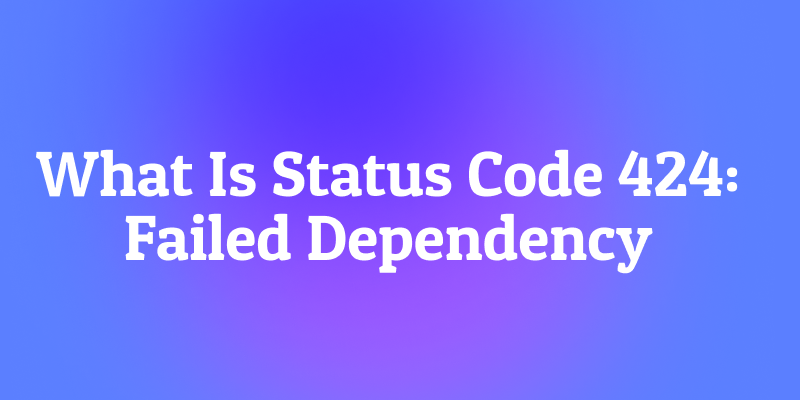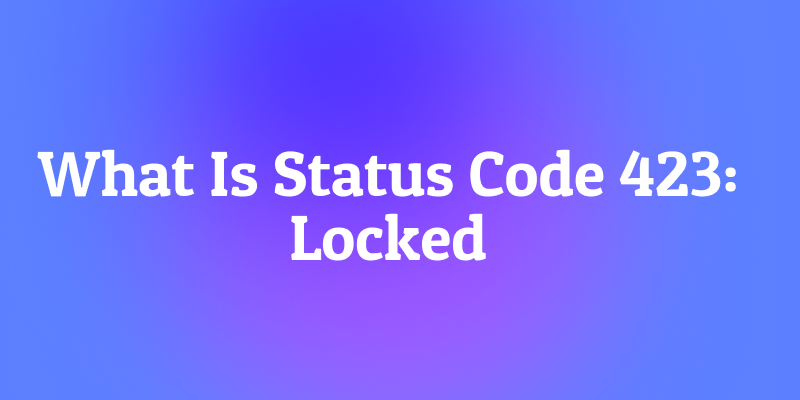Push notifications are a critical component of modern applications, enabling real-time communication with users across devices. For developers seeking a simple, open-source solution to send notifications without complex setups or costly subscriptions, ntfy.sh emerges as a powerful tool. Pronounced "notify," ntfy is an HTTP-based pub-sub notification service that allows developers to send push notifications to phones or desktops using straightforward PUT or POST requests.
What is ntfy and Why Should You Care?
ntfy represents a paradigm shift in push notification services. Unlike proprietary solutions that require extensive setup and ongoing fees, ntfy operates as a simple, self-hostable service built on HTTP and JSON. The platform eliminates complicated authentication processes, making it accessible to developers of all skill levels.

The service operates on a straightforward principle: you send an HTTP POST or PUT request to a topic, and subscribers receive the notification immediately. This approach removes the complexity typically associated with push notification implementations while maintaining powerful functionality.

Key advantages of ntfy include zero-configuration setup, complete privacy control, and universal compatibility across platforms. The service supports Android, iOS, web browsers, and command-line interfaces, ensuring your notifications reach users regardless of their preferred platform.
Core Features That Make ntfy Stand Out
Simple HTTP API Integration
ntfy's HTTP-based API eliminates the need for complex SDKs or authentication tokens. You can send notifications using basic curl commands, making integration possible in any programming language or environment. The API accepts both POST and PUT requests, allowing flexibility in how you structure your notification calls.

The service supports various content types, including plain text, JSON, and even file attachments. This versatility means you can send everything from simple status updates to complex data structures with rich formatting.
Cross-Platform Compatibility
One of ntfy's strongest features is its universal platform support. The service provides native applications for Android and iOS, ensuring mobile users receive notifications reliably. Additionally, web-based notifications work seamlessly across desktop browsers, making it easy to reach users on any device.

The command-line interface proves particularly valuable for system administrators and developers who prefer terminal-based workflows. You can integrate ntfy into shell scripts, cron jobs, and automated deployment pipelines without additional dependencies.
Self-Hosting and Privacy Control
Unlike cloud-based notification services, ntfy offers complete control over your data and infrastructure. You can host the service on your own servers, ensuring sensitive information never leaves your environment. This self-hosting capability proves essential for organizations with strict security requirements or those operating in regulated industries.
The open source nature of ntfy means you can audit the code, customize functionality, and contribute improvements back to the community. This transparency builds trust and allows for specialized implementations tailored to specific use cases.
Technical Architecture and Implementation
Server-Side Components
ntfy's server component handles message routing, topic management, and client connections. The lightweight architecture ensures minimal resource consumption while maintaining high performance. The server stores messages temporarily, allowing offline clients to receive notifications when they reconnect.
The service uses WebSocket connections for real-time communication, falling back to HTTP polling when WebSocket support is unavailable. This dual approach ensures reliable delivery across various network conditions and firewall configurations.
Topic-Based Message Routing
The topic system forms the foundation of ntfy's messaging architecture. Topics act as channels where publishers send messages and subscribers receive them. This publish-subscribe model scales efficiently from simple personal notifications to complex multi-user systems.
Topic names can be arbitrary strings, making organization intuitive. For example, you might use topics like "server-alerts," "deployment-status," or "user-registrations" to categorize different types of notifications.
Message Formatting and Rich Content
ntfy supports various message formats, from plain text to structured JSON payloads. The service handles message priorities, allowing you to distinguish between urgent alerts and routine notifications. Additionally, you can include custom headers, emojis, and even file attachments to create engaging notification experiences.
The platform supports markdown formatting in messages, enabling rich text presentation without complex HTML structures. This feature proves particularly useful for detailed status reports or formatted documentation snippets.
Practical Implementation Examples
Basic Notification Sending
The simplest ntfy implementation involves sending a text message to a topic. Using curl, you can send notifications with a single command:
curl -d "Server backup completed successfully" ntfy.sh/server-monitoring
This basic example demonstrates the service's accessibility – no authentication, no complex headers, just a simple HTTP request. The message immediately appears on all devices subscribed to the "server-monitoring" topic.
Advanced Message Configuration
For more sophisticated notifications, you can leverage ntfy's extended features. Priority levels help categorize message importance, while custom headers provide additional context:
curl -H "Priority: urgent" \
-H "Title: Critical Alert" \
-d "Database connection lost - immediate attention required" \
ntfy.sh/critical-alerts
Integration with Monitoring Systems
ntfy excels when integrated with existing monitoring infrastructure. System administrators can configure their monitoring tools to send notifications through ntfy, creating a unified alerting system. The service works seamlessly with popular monitoring solutions like Prometheus, Grafana, and Nagios.
Using Apidog for ntfy Testing and Development
When developing applications that integrate with ntfy, proper API testing becomes crucial. Apidog provides an excellent platform for testing ntfy endpoints, managing different notification scenarios, and validating message delivery.
API Testing and Validation
Apidog allows you to create comprehensive test suites for your ntfy implementations. You can simulate various notification scenarios, test different message formats, and verify that your applications handle ntfy responses correctly. The platform's intuitive interface makes it easy to structure complex testing workflows.

The tool supports environment variables and dynamic data generation, enabling you to test ntfy notifications with realistic data sets. This capability proves invaluable when developing applications that send notifications based on user actions or system events.
Workflow Automation
Apidog's automation features complement ntfy's simplicity perfectly. You can create automated workflows that trigger ntfy notifications based on API test results or scheduled intervals. This combination enables sophisticated notification systems with minimal manual intervention.

For instance, you might configure Apidog to run automated tests against your application APIs and send ntfy notifications when tests fail. This approach creates a robust monitoring system that keeps your team informed about application health.
Security Considerations and Best Practices
Topic Security and Access Control
While ntfy's simplicity is appealing, security considerations remain important. Topics are publicly accessible by default, meaning anyone who knows the topic name can subscribe or publish messages. For sensitive applications, consider implementing additional security layers or using self-hosted instances with access controls.
The service supports basic authentication and access tokens for enhanced security. These features allow you to control who can publish to specific topics while maintaining the service's ease of use.
Message Privacy and Data Protection
When using public ntfy instances, remember that messages pass through third-party servers. For sensitive information, self-hosting provides complete control over data handling. Additionally, you can implement message encryption at the application level for extra security.
Consider the lifecycle of your messages and implement appropriate retention policies. ntfy temporarily stores messages for offline delivery, so sensitive information should be encrypted or avoided entirely in notification content.
Rate Limiting and Abuse Prevention
Production ntfy implementations should include rate limiting to prevent abuse and ensure service availability. The platform supports configurable rate limits per topic and IP address, helping maintain service quality under varying load conditions.
Monitor your ntfy usage patterns and adjust limits accordingly. Legitimate use cases rarely require extremely high message volumes, so conservative limits often provide adequate protection without impacting normal operations.
Performance Optimization and Scaling
Message Delivery Performance
ntfy's architecture prioritizes message delivery speed while maintaining reliability. The service uses efficient connection pooling and message queuing to handle high-volume scenarios. However, understanding performance characteristics helps optimize your implementation.
WebSocket connections provide the fastest delivery method, while HTTP polling adds latency but ensures broader compatibility. Consider your application's requirements when choosing between these approaches.
Scaling Considerations
For high-volume applications, multiple ntfy instances can be deployed behind load balancers. The stateless nature of the service makes horizontal scaling straightforward. Additionally, topic partitioning can distribute load across multiple servers.
Database performance becomes important in high-volume scenarios. ntfy supports various database backends, allowing you to choose the most appropriate storage solution for your use case.
Monitoring and Observability
Production ntfy deployments benefit from comprehensive monitoring. Track message delivery rates, connection counts, and error rates to identify potential issues before they impact users. The service exposes metrics endpoints compatible with popular monitoring systems.
Log analysis provides valuable insights into usage patterns and potential security concerns. Regular review of ntfy logs helps maintain service health and identify optimization opportunities.
Advanced Use Cases and Integrations
CI/CD Pipeline Integration
ntfy proves invaluable in continuous integration and deployment workflows. Developers can receive immediate notifications about build status, test results, and deployment progress. The service integrates seamlessly with popular CI/CD platforms like Jenkins, GitLab CI, and GitHub Actions.
For example, you might configure your deployment pipeline to send ntfy notifications when deployments complete successfully or encounter errors. This immediate feedback helps teams respond quickly to issues and maintain deployment velocity.
IoT and Edge Computing Applications
The lightweight nature of ntfy makes it suitable for IoT and edge computing scenarios. Devices can send status updates, sensor readings, and alert messages through simple HTTP requests. The service's minimal resource requirements ensure it works well on resource-constrained devices.
Consider implementing ntfy for home automation systems, industrial monitoring, or remote sensor networks. The platform's simplicity reduces complexity in environments where traditional notification services might prove too heavyweight.
Business Process Automation
ntfy can enhance business process automation by providing immediate notifications about process status and completion. Whether you're managing order fulfillment, customer service workflows, or financial transactions, ntfy keeps stakeholders informed throughout the process.
Integration with business systems often requires custom development, but ntfy's simple API makes such integrations straightforward. You can send notifications from ERP systems, customer relationship management platforms, or custom business applications.
Troubleshooting Common Issues
Connection and Delivery Problems
Network connectivity issues represent the most common ntfy problems. Firewall restrictions, proxy configurations, and DNS resolution can all impact service availability. Systematic troubleshooting helps identify and resolve these issues quickly.
Start by testing basic connectivity using curl or similar tools. Verify that your network allows HTTP/HTTPS traffic to ntfy endpoints and that DNS resolution works correctly. Many connection issues stem from network infrastructure rather than ntfy configuration.
Message Formatting and Character Encoding
Message formatting problems can prevent proper notification delivery or display. Ensure that your messages use appropriate character encoding and avoid problematic characters that might interfere with HTTP transmission.
Test your message formats thoroughly, especially when sending structured data or non-ASCII characters. Different client platforms may handle message formatting differently, so comprehensive testing across target platforms is essential.
Performance and Scalability Issues
High-volume applications may encounter performance bottlenecks that require optimization. Monitor message delivery times, connection establishment rates, and resource usage to identify performance issues early.
Consider implementing message queuing, connection pooling, and caching strategies to improve performance. Additionally, evaluate whether your ntfy deployment has adequate resources for your use case.
Conclusion
ntfy represents a refreshing approach to push notifications, prioritizing simplicity and developer experience over complex feature sets. The platform's HTTP-based API, cross-platform compatibility, and open source nature make it an excellent choice for developers seeking reliable notification capabilities without vendor lock-in.
The service's flexibility accommodates use cases ranging from simple personal notifications to complex enterprise integrations. Whether you're building monitoring systems, automating workflows, or creating user-facing applications, ntfy provides the foundation for effective notification delivery.
As you implement ntfy in your projects, remember that tools like Apidog can significantly enhance your development process by providing robust testing capabilities and workflow automation. The combination of ntfy's simplicity and Apidog's testing features creates a powerful foundation for notification-driven applications.





